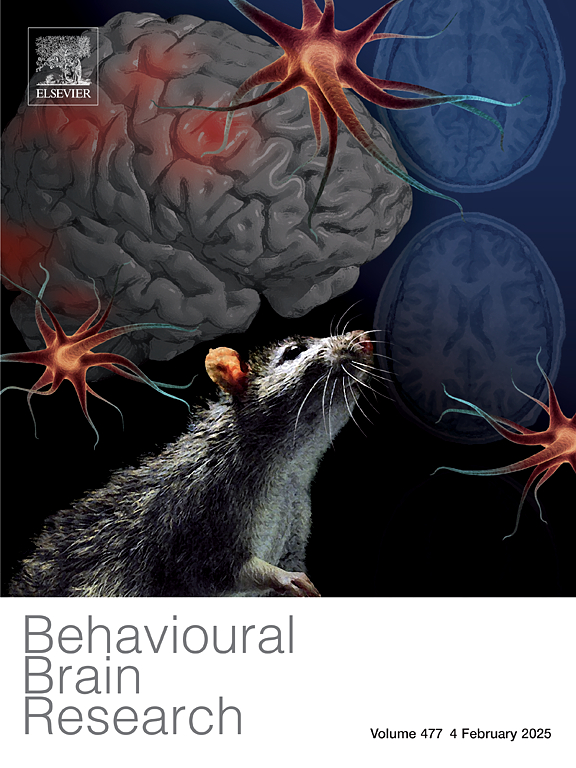Novel object recognition task for mice: Is it a test for memory, object neophobia or innate preference?
IF 2.3
3区 心理学
Q2 BEHAVIORAL SCIENCES
引用次数: 0
Abstract
Novel object recognition task (NOR) is one of the most widely used memory tests for mice. Over the years of intensive use, the test protocol has become largely standardized except for one detail, the objects themselves. In three experiments including in total 41 C57BL/6 J mice, we tested the impact of the object novelty vs. its general appeal to an individual mouse using 18 object pairs. This was possible by having a cross-over design where the same object was familiar to half of the mice and novel for the other half. Some objects were consistently approached or avoided across mice. However, an object pair that showed a strong novelty preference in one group of mice, could fail to do so in another group. Therefore, a counterbalance design of the object assignments is important. Pre-test habituation of mice to the presence of objects in their home cage increased object exploration in the test for the first three object pairs. We also assessed how well the object-related details in NOR are disclosed in current literature. As a representative sample, we searched for NOR reporting in mice published in top-tier Nature journals during 2024 and found 69 articles. Notably, only 24.6 % of the articles described the objects and only 14.5 % employed a cross-over design. Most alarming was that 20.3 % of the reports mixed up object neophobia and memory as the task outcome. Obviously, more detailed reporting is needed to ensure reproducibility of results obtained with the NOR test in mice.
老鼠的新物体识别任务:它是记忆测试、新物体恐惧症测试还是先天偏好测试?
新目标识别任务(NOR)是应用最广泛的小鼠记忆测试之一。经过多年的密集使用,测试协议已经在很大程度上标准化了,除了一个细节,即对象本身。在总共41只C57BL/6 J小鼠的三个实验中,我们使用18对对象测试了对象新颖性对单个小鼠的总体吸引力的影响。这可以通过交叉设计来实现,在交叉设计中,相同的物体对一半的老鼠来说是熟悉的,对另一半来说是新的。老鼠会不断接近或回避一些物体。然而,一对物体在一组老鼠中表现出强烈的新颖性偏好,在另一组老鼠中可能不会这样做。因此,对象赋值的平衡设计是很重要的。测试前老鼠对笼子里物体的习惯增加了前三对物体的探索。我们还评估了NOR中与对象相关的细节在当前文献中的披露程度。作为代表性样本,我们检索了2024年发表在《自然》顶级期刊上的小鼠NOR报告,共发现69篇。值得注意的是,只有24.6 %的文章描述了对象,只有14.5 %的文章采用了交叉设计。最令人担忧的是,20.3 %的报告混淆了新物体恐惧症和记忆作为任务结果。显然,需要更详细的报告来确保NOR试验在小鼠中获得的结果的可重复性。
本文章由计算机程序翻译,如有差异,请以英文原文为准。
求助全文
约1分钟内获得全文
求助全文
来源期刊

Behavioural Brain Research
医学-行为科学
CiteScore
5.60
自引率
0.00%
发文量
383
审稿时长
61 days
期刊介绍:
Behavioural Brain Research is an international, interdisciplinary journal dedicated to the publication of articles in the field of behavioural neuroscience, broadly defined. Contributions from the entire range of disciplines that comprise the neurosciences, behavioural sciences or cognitive sciences are appropriate, as long as the goal is to delineate the neural mechanisms underlying behaviour. Thus, studies may range from neurophysiological, neuroanatomical, neurochemical or neuropharmacological analysis of brain-behaviour relations, including the use of molecular genetic or behavioural genetic approaches, to studies that involve the use of brain imaging techniques, to neuroethological studies. Reports of original research, of major methodological advances, or of novel conceptual approaches are all encouraged. The journal will also consider critical reviews on selected topics.
 求助内容:
求助内容: 应助结果提醒方式:
应助结果提醒方式:


